
HD-HG-RS Range
Stainless Steel Mechanically Sealed Process Pumps
The HD-DG-RS range of horizontal, centrifugal mechanically sealed pumps are suitable for a wide variety of corrosive and arduous applications including chemical transfer, pharmaceutical and food production. Constructed from 316 stainless steel or cast iron, with multiple impeller and seal options, this range is suitable for a vast range of applications from simple water transfer to processes with high viscosities (<700Cp), solids or gas/air pumping (<15% air).
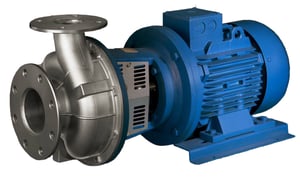
IMPELLER OPTIONS
The HD-HG-RS range comes with a choice of impeller designs to best fit your application. The open and vortex impeller are suitable for aggressive liquids with suspended solids and / or high viscosities. The vortex model features a recessed impeller, capable of pumping solids up to 60% of the size of the discharge port. The closed impeller is suitable for clean liquids or liquids containing a small amount of solids in suspension.
FLEXIBILITY
The modular design of the HD-HG-RS range makes the pump completely flexible to your business requirements. The standard seal chamber can fit any seal type, brand or arrangement. So with very little adjustment, the pump can be modified to meet any future changing plant requirements quickly and economically.
MODULAR DESIGN
Reduce operational and maintenance costs the addition of a wear plate reduces the cost of maintenance because it allows the user to replace just the wear plate instead of the entire pump casing. The flexible pump casing can fit all sized impellers from open to closed, so with little adjustment, it can be modified to new plant or process requirements.
EXCLUSIVE UK DISTRIBUTOR
We’re thrilled to announce a new chapter in our partnership with Salvatore Robuschi Pumps! After more than 12 successful years of supplying their pumps under the Crest Pumps name, we are now proud to become the exclusive UK distributor for Salvatore Robuschi’s renowned range of industrial pumps.
This marks an exciting transition as we now promote these high-quality products exclusively under the SR Pumps brand. This new agreement marks a shift to promoting the products exclusively as SR pumps, aligning with our commitment to transparency, quality, and customer trust.


THE CREST PUMPS LIFETIME GUARANTEE
No matter how old your pump becomes, in the unlikely scenario that you have a problem, our engineers will be on hand to diagnose the issue and help you get up and running again.That’s why, with Crest Pumps you’ll never need to worry about unplanned downtime again.
Talk to us now to discuss your chemical pump requirements or book a free site audit to see how much time and money you could save!
Built to outlast and outperform
Upfront prices are just the beginning — energy and maintenance make up most of a pump’s lifetime cost. Our LCC calculator breaks it down, helping you compare different pump types and manufacturers to find the best solution for your needs.
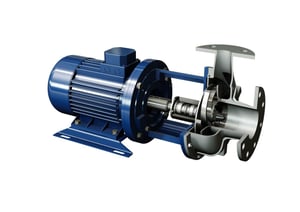
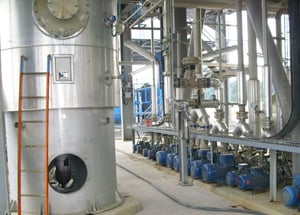
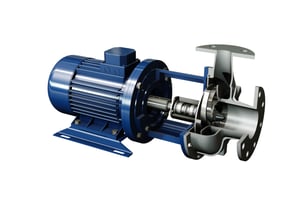
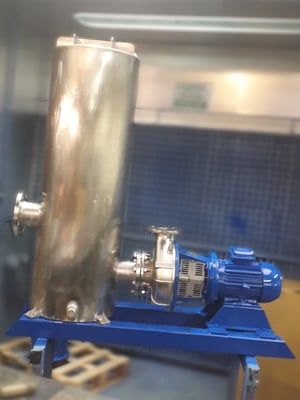
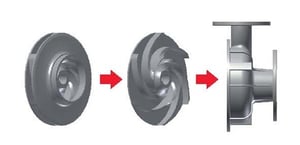
















Technical Specification
| Model | SUCTION / DISCHARGE (mm*mm) |
SPEED (rpm) |
RATED CAPACITY (m3/hr) |
RATED HEAD (m) |
MAX CAPACITY (m3/hr) |
MAX HEAD (m) |
MOTOR OUTPUT (Kw) |
BEST EFFICIENCY (%) |
| 40-25-160 | 40*25 | 2900 | 9 | 32 | 13 | 37 | 2.2 | 44 |
| 40-25-185 | 40*25 | 2900 | 11 | 41 | 13 | 45 | 3 | 40 |
| 50-32-160 | 50*32 | 2900 | 25 | 31 | 50 | 37 | 4 | 64 |
| 65-40-160 | 65*40 | 2900 | 43 | 29 | 55 | 38 | 5.5 | 68 |
|
80-50-160 |
80*50 |
2900 |
64 | 31 | 90 | 40 | 11 | 70 |
|
80-50-200 |
80*50 |
2900 |
66 | 50 | 90 | 60 | 15 | 79 |
|
100-65-160 |
100*65 |
2900 |
105 | 53 | 150 | 65 | 22 | 79 |
|
100-65-200 |
100*65 |
2900 |
84 | 32 | 120 | 40 | 15 | 80 |
|
128-80-160 |
125*80 |
2900 |
130 | 31 | 180 | 40 | 18.5 | 78 |
|
125-80-200 |
125*80 |
2900 |
170 | 52 | 300 | 61 | 37 | 78 |
Frequently Asked Questions
We have specialised in corrosion resistant pumps since 1973 so can almost certainly find you a solution to your application. Our chemical resistance table shows just some of the liquids we have experience pumping, but please talk to us to find the best chemical pumping solution for you.
Chemical pumps work by using a combination of force and suction to move liquid or gas from one location to another. The pump is driven by an electric motor or other power source, and the force of the motor is used to move the liquid or gas through the pump. The pump then uses suction to draw the liquid or gas into the pump and then expel it out the other end. This process if repeated until the desired pressure and flow rate is achieved.
There are many types of chemical pumps including centrifugal and diaphragm pumps but what they have in common is the materials of construction that need to be resistant to the pumped medium. Plaastics and rubbers are common choices but also exotic metals, ceramic and even glass may be selected according to their suitability.
Viscosity is a measure of a fluid's resistance to flow. It affects centrifugal pumps in a variety of ways, including how much power is needed to move the fluid, how quickly the pump can move the fluid, and how efficiently the pump can move the fluid. Higher viscosity fluids require more power to move and take longer to move through the pump, whilst lower viscosity fluids require less power and can move through the pump quicker.
Anything over 25cP (centipoise) will have a significant effect on the performance of centrifugal pumps.
- Firstly, and most importantly : read through the manufacturer's installation and operation manual.
- Ensure that the pump is running in the correct rotation with a flick test (quickly on and off.)
- Open the suction valve and flood the pump.
- Close, or partially close the discharge valve, depending upon operating conditions.
- Open any cooling or recirculation lines, including any seal flush or system.
- Start the pump drive.
- Slowly open the discharge valve until the pump reaches the desired flow.
- Check the discharge pressure gauge to ensure the pump is operating within its parameters.
- Do not operate the pump below its minimum flow requirements or above the maximum recommended flow rate.
Centrifugal pumps are not inherently self-priming and need to have a sufficiently flooded suction to work efficiently. They can be made to self-prime by utilising an integrally designed casing that recirculates liquid around the pump until all air in the suction line is evacuated or by installing a priming chamber on the suction side of the pump. This chamber is initially filled with liquid,when the pump starts this liquid is evacuated causing a vacuum in the suction line that draws liquid into the chamber and then the pump. It is important to always consult the manufacturer who will advice on maximum suction lifts.
A mechanically sealed pump is a type of pump that uses a mechanical seal to prevent fluid leakage where the pump shaft passes through the casing. The mechanical seal consists of two flat, precision machined surfaces – one rotating with the shaft and the other stationary – pressed together by a spring or hydraulic force to create a tight seal. A thin film of fluid between these faces provides lubrication and prevents wear.
Running dry occurs when a pump operated without sufficient liquid in the system. Most pumps rely on the fluid they move for lubrication and cooling, so running dry can cause overheating, excessive wear, and serious damage to internal components like seals, bearings and impellers.
Certain pump types, such as centrifugal pumps, are particularly vulnerable to dry running because they require fluid to create suction and maintain efficiency. On the other hand, some designs, like peristaltic pumps and diaphragm pumps, can handle dry running for short periods without significant damage.
To prevent dry running, many systems use dry-run protection sensors, such as flow switches, pressure sensors, or thermal shutdown mechanisms, which automatically stop the pump if no liquid is detected. Proper system design, including ensuring adequate priming and suction conditions, is also essential to avoid dry running and extend pump life.
Trusted By The Best































DON’T JUST TAKE OUR WORD FOR IT
I have found Crest to be an honest, straight forward company to do business with. They have a good attitude to customer service and do what they say they’re going to do.






